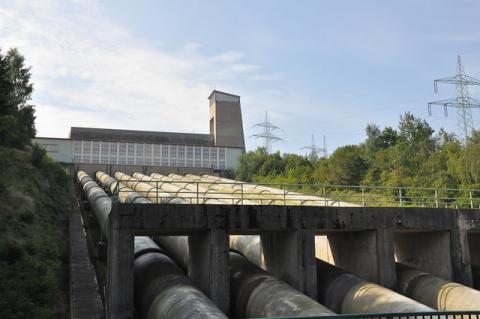
Region: Global
Country: Global / Non-Specific
Sector: Water and Sanitation
Keywords: PPPs by Topic *, Innovative Revenues for Infrastructure (IRI) **, Water
Document Link(s):
Document Summary:
Vast amounts of valuable energy, agricultural nutrients, and water could potentially be recovered from the world's fast-rising volume of municipal wastewater, according to a new study by UN University's Canadian-based Institute for Water, Environment and Health (UNU-INWEH).
Document Details:
The study's estimates and projections are based on theoretical amounts of water, nutrients, and energy that exist in the reported municipal wastewater produced worldwide annually.
Among many findings:
- The energy value in 380 billion m3 of wastewater is estimated to be 53.2 billion m3 methane—enough to provide electricity for up to 158 million households, or 474 million to 632 million people, assuming an average of three to four persons per household. Given the foreseen wastewater increases, that number rises to 196 million households in 2030, and 239 million households in 2050.
- In agriculture, the volume of water potentially recoverable from wastewater could irrigate up to 31 million hectares—equal to almost 20% of the farmland in the European Union (assuming two crops and a maximum 12,000 m3 of water per hectare per year). "The reclaimed water can be used to irrigate new areas or replace valuable freshwater where crops are already irrigated."
- World wastewater production is expected to reach 470 billion m3 by 2030, the year by which the SDGs are supposed to be met—a 24% increase from today. And by 2050, it will reach 574 billion m3, a 51% increase.
- Asia is the largest wastewater producer with an estimated 159 billion cubic meters, representing 42% of urban wastewater generated globally, with expectations of that proportion rising to 44% by 2030
- Other regions producing large volumes of wastewater: North America (67 billion m3) and Europe (68 billion cubic meters) - virtually equal volumes despite Europe's higher urban population (547 million vs. North America's 295 million. The difference is explained by per capita generation of wastewater: Europe 124 cubic meters; North America 231 cubic meters). By contrast, Sub-Saharan Africa produces 46 cubic meters of wastewater per capita—about half of the global average (95 cubic meters), reflecting limited water supply and poorly-managed wastewater collection systems in most urban settings.
- Full recovery from wastewater could, theoretically, offset 14.4% of global demand for nitrogen as a fertilizer nutrient; phosphorus 6.8% and potassium 18.6%. Based on current levels of nitrogen, phosphorus, and potash use in agriculture worldwide (estimated at 193 million metric tonnes in 2017), the study says about 13.4% of the global fertilizer nutrient demand could be supplemented by full nutrient recovery from wastewater.
- The nutrients in wastewater could theoretically generate revenue of $13.6 billion globally: $9.0 billion from the recovery of nitrogen, $2.3 billion from phosphorus, and $2.3 billion from potassium.
Updated: